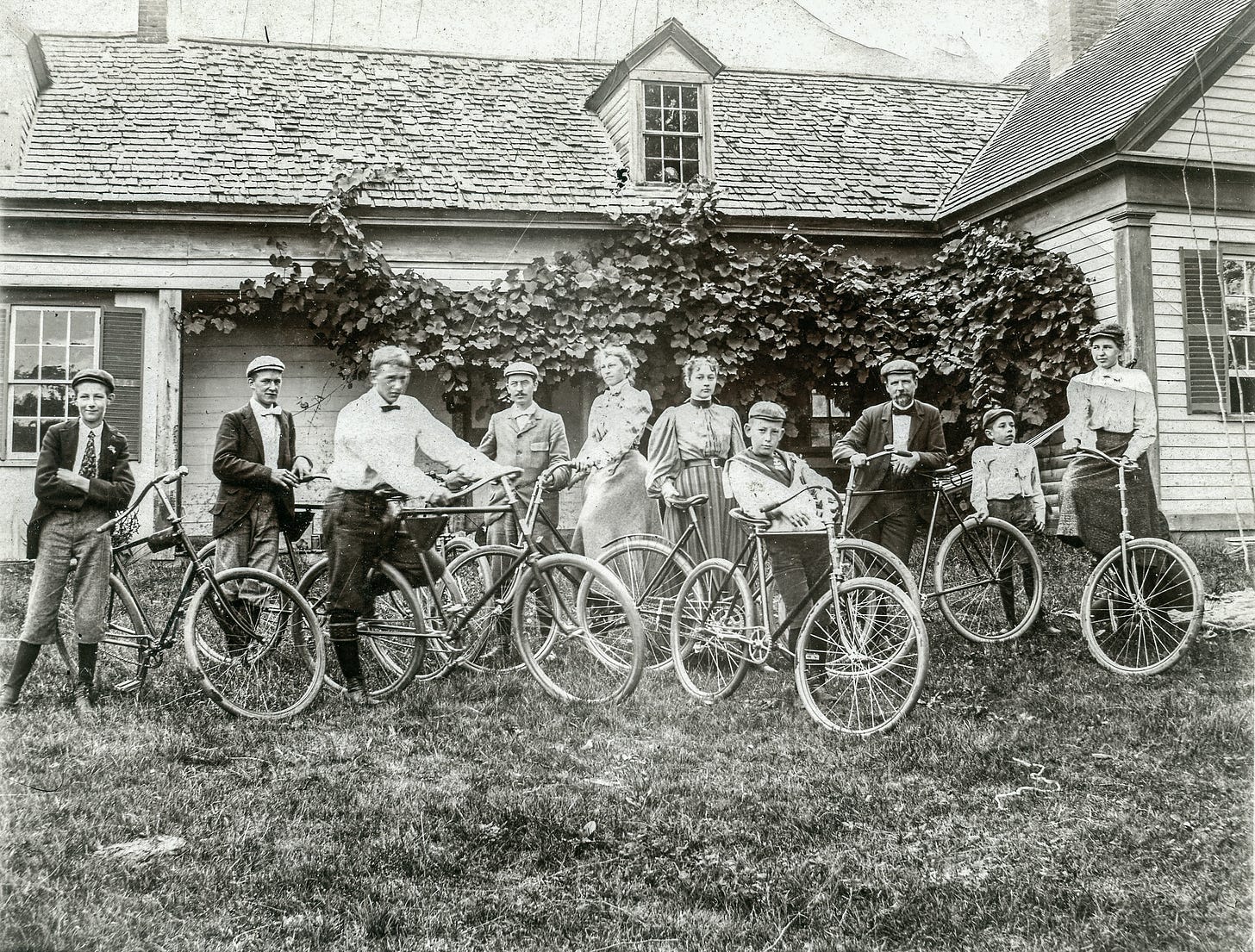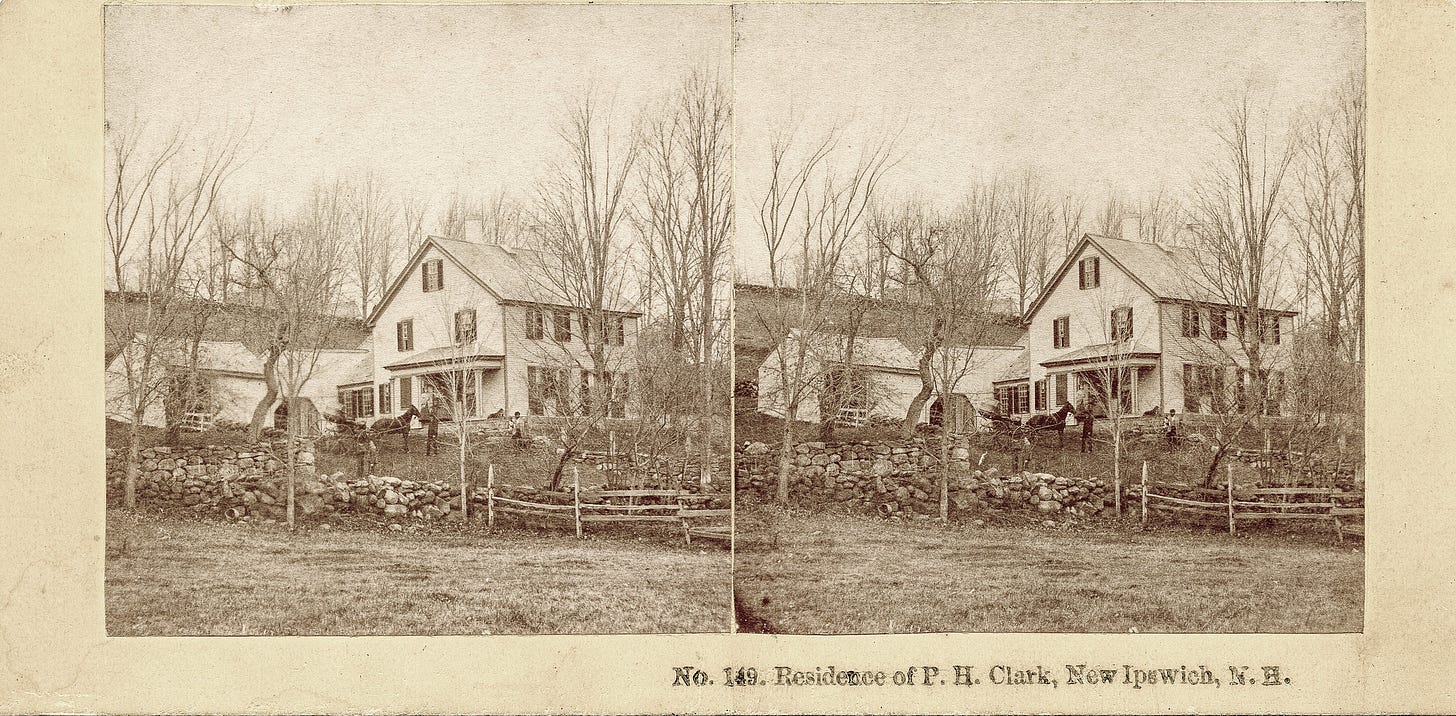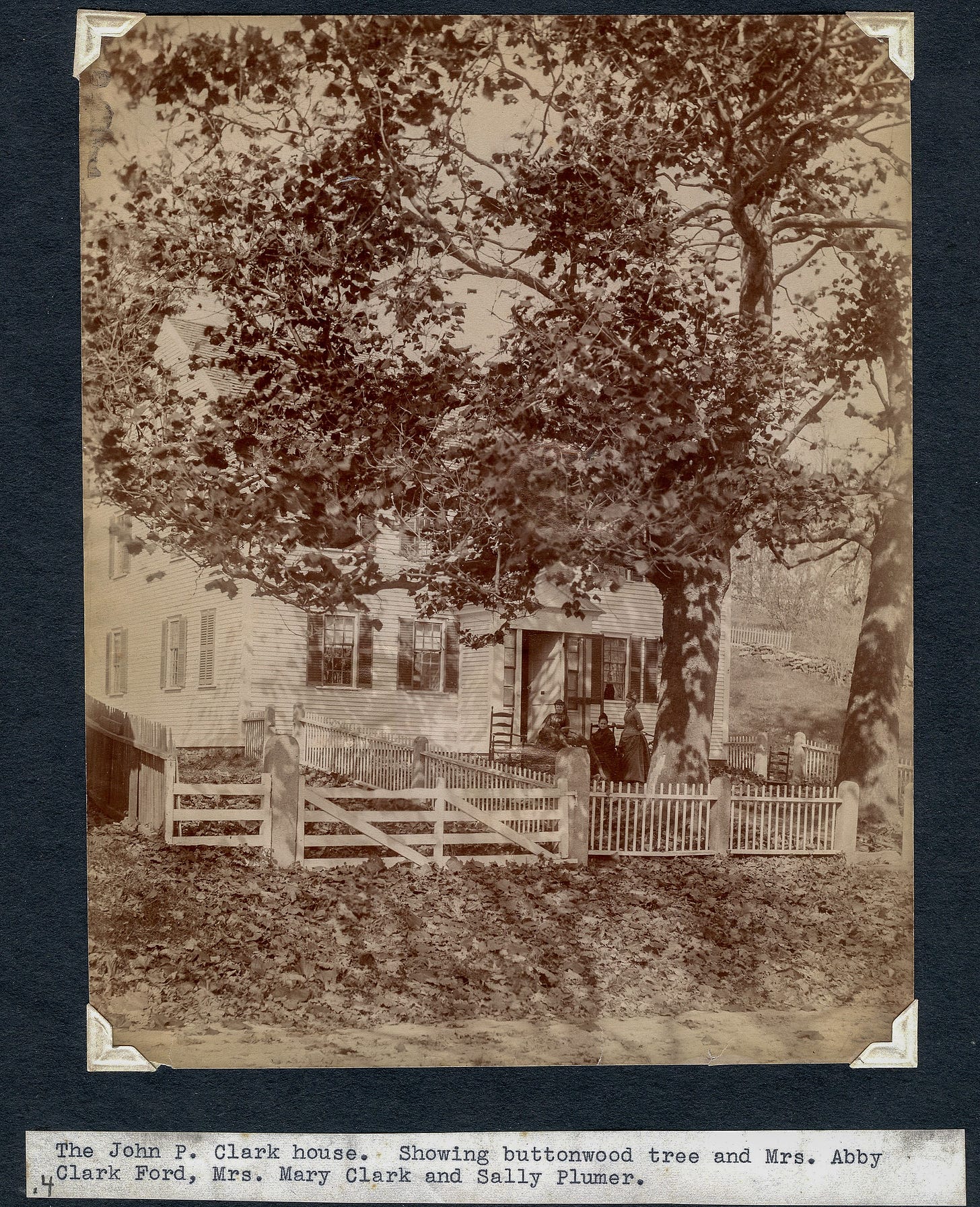The Peter H. Clark house circa 1878 on Main Street is listed as #64 in the registry of New Ipswich Center Village Historic District. Peter owned the Clark Hotel from 1867 to 1877. His family and that of his brother John were renowned in the area as the "Clark Troupe", giving musical performances. Peter was also a bandmaster, vocal and instrumental teacher.
Peter H. Clark House
John P. Clark house
The People of New Ipswich
The New Ipswich Historical Society has a large collection of “people” photographs. There are group photos, formal studio portraits and what might be considered snapshots of the day. We’ll feature one or more in this newsletter. Not everyone has been identified, so we’ll appreciate reader input.

On this day - April 30, 1908
James Roger diary entry
30th April 1908 (Thursday)
Cool morning wind E. to S.E. then east and warm after. David went for wood for Mr. Walker in forenoon, and plowed in top field in afternoon. I walked to Greenville in afternoon and paid Prescott’s grain bill. Got haircut and bought watch for David saw Mr. Ely and had talk about clubhouse. Had letter from Mr. London. Mother washed entrance of hall in forenoon and I filled the lamps in afternoon. Mr. Bernier called today and I paid his coal bill $17.12. John Barnett teaming away the hard pan from church today.
This month closes with promise of earlier spring than last year. The grass is getting quite green. Apple trees and others budding in leaf. Some sweet peas are coming through at door and tomatoes coming through in frame.
On this day - April 30, 1897
William Jurian Kaula diary - MUSÉE DE CLUNY
The remains of the ancient Roman baths which stand on the corner of the Boulevards St. Germain and St. Michael right in the heart of the most animated portion of le Quartier Latin are among the very oldest and most interesting ruins and relics in Paris. On the same site now stands the famous Hôtel de Cluny, a museum now belonging to the municipality of Paris. The remains of the thermes* or baths adjoin the building and convey an excellent idea of the substantial methods employed by the ancient Romans in their buildings. The weight and moisture of a garden which lay above it for many years down to 1810 have left it uninjured. The Musée de Cluny contains a tremendous collection of medieval and antique relics and objects of art - some 11,000 in number which would delight an antiquarian forever. Rooms of carvings in wood and metals, statues, busts, armor of all kinds and ages, collections of many kinds like shoes from various countries; furniture of any century but our own; medals, old books, mirrors, leather hangings, tapestries, ecclesiastical vestments; laces; bronzes, pottery, china, porcelain, cut glass; musical instruments; jewels; embroideries; enamels, stained glass; cabinets containing myriads of dazzling articles of ivory and rock crystal; works in iron, locks, tools, knockers, andirons; collections of spoons, forks, knives, clocks, book bindings, etc. There are about a dozen rooms loaded with these things mentioned and an immense pile besides which would take weeks to examine carefully.
*thermes = hot springs





Would love to explore Musee de Cluny and the Roman baths. Glad he wrote about his adventures.